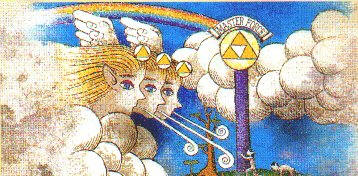
We know, Zelda: Ocarina of Time was a great game and one of the most popular titles in the Zelda series. But was it really as good as it could have been? Unfortunately when Nintendo started to work on their first 3D Zelda game, they planned many interesting concepts that were never implemented in the final game. Why? What happened to Zelda 64 and why Ocarina of Time is just a tiny part of their original project? Take some time and be prepared for one of the most epic legends ever: birth, development, death and rebirth of the Zelda 3D project for Nintendo 64, a game that was so ambitious that it was never really completed.
[Original article written in Italian in 2002 by monokoma, english translation by Yota in 2008, updated, fixed and expanded by monokoma in 2014.]
The Legend Of Zelda: 64DD
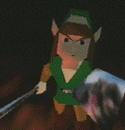
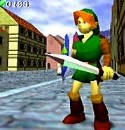
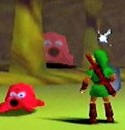
The first version of Zelda 64 was originally conceived as a title developed specifically to make full use of the innovative features of the 64DD, like the internal clock, rewritable disks with more space than a normal N64 cartridge, internet connection and 3D editing. Zelda 64DD was planned to be a revolutionary game, that would have not be possible to be made on a normal Nintendo 64. Miyamoto and his team wanted to make Hyrule a persistent world: any changes that Link would perform on it would be saved on the disk: any cut tree, any broken container and any other changes made to the environment would have been saved in the game for the entire adventure (a feature that was later used in Dōbutsu no Mori / Animal Crossing for the N64).
This would have been possible thanks to the 64 Disk Drive features, but when the add-on was released in Japan it sold very poorly, as other failed console add-ons. The market was not interested. The 64DD was postponed for so long that even Nintendo lost faith on their ambitious project. As the sales of the N64 were not great, Nintendo had to make a choice and they announced that Zelda 64 would be released on a traditional N64 cartridge. Without the 64DD hardware, Nintendo had to remove many of the interesting features that were planned for Zelda 64DD and the port from 64DD to N64 had a huge impact on many sections of the game, that had to be changed or removed.
Some interesting info on the early development of Zelda 64 can be found on Ocarina of Time Iwata Asks:
Koizumi: All kinds of things, like battles using a sword and battling lots of enemies. The Super Mario 64 project had passed by incredibly quickly, so a lot that I wanted had gone undone and I wanted to pour all those leftover ideas into The Legend of Zelda: Ocarina of Time.
Iwata: In the end, The Legend of Zelda: Ocarina of Time eventually became a massive project that mobilized nearly everyone who belonged to EAD at that time, but how many people did you start with?
Koizumi: Three.
Osawa: Before Koizumi-san joined, (Jin) Ikeda-san6 and I started it just the two of us!
Iwata: When people talk about The Legend of Zelda: Ocarina of Time, they mention various things like an epic story, solving puzzles, trotting across a broad field on a horse and how cool Link is, but it began with the single theme of making a Zelda game that included chanbara-style swashbuckling!
Some more info can be found in various articles and interviews:
Ocarina of Time was originally designed with the N64 Disk Drive in mind, and in the future, we’d like to make use of some of those unrealized ideas intended for the N64 DD. – Nintendo Power Shigeru Miyamoto Interview
The game Zelda designer Shigeru Miyamoto and his team wanted to create would be set in a persistent world. Every change Link would make to his surroundings would stick. If you smashed a box, it would stay broken. If you dug a hole, it would remain there until you covered it. If you left footsteps in the sand, they would stay. All this was supposed to be made possible by the enhanced storage space of the 64DD. IGN: Hyrule Times Volume 4
Some magazines scans that covered Zelda 64 with 64DD features:
A great video documentary about the initial development of Zelda 64DD was created by Adam Hendrickson and you can see it below:
The Legend Of Zelda: Ocarina Of Time
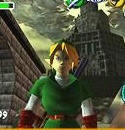
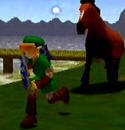
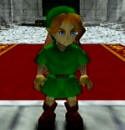
Ocarina of Time, the first 3D Zelda game, managed to preserve the feeling of the series and it was an huge success. Released in winter 1998 on the Nintendo 64, Ocarina of time was however a mere shadow of his former self, the revolutionary Zelda 64DD. Hidden in the game’s code it’s still possible to find many unused leftovers from the original concept and some of the unused features that would have been used while connecting Zelda: Ocarina of Time to the 64DD. With a Gameshark it’s even possible to play some weird beta events. Ocarina of Time is a great game, but because of all the cuts and changes made to the project, we may never know how the game was really meant to be.
There were actually also some ideas I wanted to incorporate, but because of the time shortage, I couldn’t — and if I may add this, I am not completely satisfied with the 3D system in Zelda, so if we could have had more time maybe it could have been somewhat different. But because at some point we have to finish our games, the new ideas we have may be incorporated in some sort of other game in the future. – Shigeru Miyamoto with IGN, January 1999
The Legend Of Zelda: URA
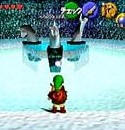
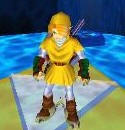
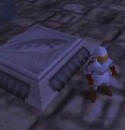
Zelda URA (“Another Zelda” in japanese) is one of the most popular and interesting tales in the Zelda history. After Ocarina was downgraded to be played on a plain N64 cartridge, Nintendo planned to create a 64 disk expansion with some of the features that had to be cut from the original game. As the released (only in Japan) F-zero 64DD expansion, Ura was meant to add more content to Ocarina Of time, with new mini-games, new sub-quest, redesigned and new dungeons. In an interview, Miyamoto tells us that when the player would have completed Ocarina of Time, with Zelda Ura he could revisit the same world, but with new features, new characters and more places to explore. Many questions and mysteries from Ocarina of Time would be aswered in Ura, like the invincible runner from Hirule Field, the Unicorn Fountain, the Ocarina Pedestal and many others.
This game was designed so it can be applied to the disk drive system, and by hooking up the N64 DD, you can play another version of Zelda. By that method, all the dungeons will be replaced by new ones. I think that will be the next Zelda we will make. – Nintendo Power Shigeru Miyamoto Interview
Zelda URA features planned for the 64DD:
- Ura Zelda supposedly unlocked new mini-games, new sidequests, characters and shuffled around items to give Zelda players some new stuff to do in the familiar world of Hyrule.
- Shigeru Miyamoto told us shortly before the launch of Ocarina of Time, that “you first play the initial disk version of Zelda — after finishing everything, you can enter into the world, into the basic design of the same.
- It’s very much a parody game based on Ocarina of time, but with new dungeons to explore. It even features the same storyline. (from IGN64)
- The title might support the GB Camera to create masks for Link. Miyamoto hinted of this possibility in a 64 Dream interview. If this does turn out to be true, gamers will be able to create their own masks in Talent Studio and implement them into Ura-Zelda. IGN: The Legend of Zelda DD / 22 Sep 1999 (this was working and was shown for Mother 3)
- Ocarina Of Time was design with the introduction of the DD in mind, and if you load the game with the drive connected to your system, you will see a screen option, which says “Ura Zelda” another version of Zelda.
- There were several ideas I could not incorporate into Zelda because of the lack of time and various other factors. For example, I wanted to creat some extra dungeons for those who had completed the quest. – Next-Generation magazine Feb 1999 (?)
- The 64DD adventure is said to enable gamers to revisit areas and dungeons of Ocarina of Time and experience new adventures in familiar surroundings.
- Miyamoto: “Whether or not we release it or not, we are still working on the game.”
- Ura-Zelda isn’t so much a new game as it is an expansion to an existing one: Legend of Zelda: Ocarina of Time (it is not compatible with Majora’s Mask).
- One of the few features that Nintendo told us about was the addition of new mask quests. Apart from the existing masks, Ura Zelda was to include many more — some of which were no doubt included in Majora’s Mask.
- August 25/2000: Speaking to the press in an open forum held yesterday in Tokyo, Japan, Nintendo’s Shigeru Miyamoto casually commented that “Ura-Zelda” (aka: Legend of Zelda DD) has been completed for some time now.
- Ura Zelda could not be played without owning Ocarina of Time.
Some magazines scans that covered the Zelda 64DD expansion:
The Legend Of Zelda: Beta Quests
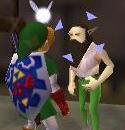
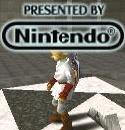
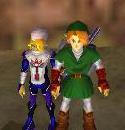
The Ocarina of Time Beta Quests are weird events and scenarios not seen in the normal game, but that can be reached thanks to some Action replay/Game Shark codes. There is an incredible number of variants in the beta quests, and most likely no one has really seen them all: some of these are connected with the new features planned for Zelda URA, while in others it’s still possible to see some of the items unused when Zelda 64 was ported from 64DD to cartridge, or just strange places and glitched areas. Certainly a precious source of information to dream about the beta of Zelda 64.
The Legend Of Zelda: Master Quest
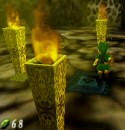
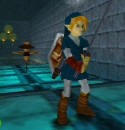
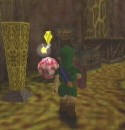
Released as a preorder bonus for Wind Waker, Master Quest was essentially an edited version of Ocarina of time with redesigned dungeons. The order of the rooms was changed, as many of the puzzles. The Outside world is still the same as Ocarina of Time, and it was a great bonus for gamers that already completed the main game, just like the original NES Zelda’s Second Quest. Master Quest is probably only a small part of the original Zelda Ura for 64DD.
Some magazines scans that covered Zelda Master Quest:
Zelda: Master Quest features on GameCube:
- In the Deku Tree there’s this one chest I can’t open… it looks like a big blue box with a fancy design on it… and there’s a track next to it, as if it could be pushed or pulled… except it can’t.
- The dungeon maps are all (supposedly) the same. It’s just the insides that are different.
- Music seems to be exactly the same as the N64 version. The game select screen at the very beginning has a nice rendition of the classic Zelda theme.
- The general map layout of the first dungeon is the same, but the puzzles, enemies, enemy locations and item locations are different. For example, many of the torches, chests, crates, floating platforms and the like have been mixed up and moved around, and some rooms have different requirements for you to fulfill in order to be able to proceed.
- Also, remember those little mini-gohmas that Gohma dropped from the ceiling during the boss fight? Well, they’re all over the dungeon now… in eggs. When you get close to one, it pops out of its egg and starts attacking.
- One room in the Deku Tree is full of tombstones with little Triforce designs on them. If you hit them with your sword, items pop out (rupees, hearts, etc.). I don’t remember anything like this in the original Ocarina.
- Enemies are tougher. Some that required one hit in Ocarina require two in Ura. I’m not sure if they do more damage or not, though.
- Also noted, some of the enemies, like the Deku Babas (Venus Flytrap head things) will some times be larger, which take more hits to kill. Enemy placement is different. Places where there would be a Deku Scrub, there may be a Deku Babas, or something.
- Dodongo’s Cavern and Jabu-Jabu were both remixed nicely. In the case of Jabu-Jabu, there are cows lodged in the walls all throughout the dungeon now. :) You have to hit them with the slingshot or boomerang to make them drop chests or open doors and whatnot. It’s pretty cool.
- I’m probably about 50% to 60% of the way through Ura Zelda, and to this point, the -only- changes are inside the dungeons. The overworld stuff is all exactly the same as in Ocarina of Time.
- They added in more of those blue boxes that you can make appear/disappear with the ocarina, and they shuffled around some platforms and whatnot, but otherwise the layouts have been mostly the same.
- The Ice Cave has areas that were featured in earlier shots, remember the two ice horses looking down? Well this is actually a new puzzle which is hella cool.
- There is also a new mini boss which is a mutated version of a white Wolfos.
- There are three new rooms in Ice Cavern with different puzzles.
- The game is IDENTICAL to OoT, except for the dungeons.
- There are NO extra items.
- The fire temple plays almost completely backwards.
- Lizard guy. Half-way bosses in the fire dungeon. They appear all over the place now, but also ones with white trimmings that seem to fight better.
- A bigger blue floating jellyfish, that appear in Lord Jabu Jabu.
- I also encountered a “mother” sand dweller. You know those plants that surface in the desert and come at you. This one was bigger and black.
- The Thieves Cave (where you win the Ice Arrows) is a pain and a half. A lot of rooms with time limits. Especially one where you have to defeat an axe armour guy in sand, which makes your movement difficult, with a strict time limit.
- There seem to be more “kill every enemy to open a door” rooms with more, strong enemies.
The Legend Of Zelda: Debug ROM
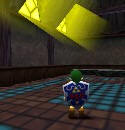

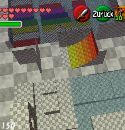
This debug version of Ocarina of Time was leaked online many years after the original release of the game. It’s a version of the game that developers used for testing specific section of Ocarina of Time, and it is possible to go anywere inside the ROM code with a debug menu. The most interesting part of the Zelda Ocarina of Time debug rom is, of course, that you can still find many leftovers from the beta, like some removed locations and models seen in the early screenshots and videos. Another interesting fact about the debug rom is that it should be based on Master Quest, as it was probably used to test and develope this GameCube bonus.
The Legend Of Zelda: Ocarina Of Time 3DS
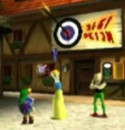
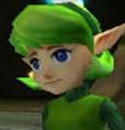
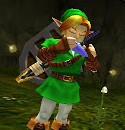
Released in June 2011, this game is a full remake of Ocarina of Time and many gamers hoped that Nintendo could have added some of the removed Zelda 64 features as a bonus content. Sadly Zelda 3DS doesn’t have many differences apart from the graphic upgrade and the unbeatable runner in the Hirule Field is still unbeatable. The 3DS remake contains modified Master Quest dungeons and mirrored overworld in addition to the original game. Maybe the mirrored overworld was planned for URA Zelda too? It was not included in the GameCube Master Quest so it’s something that was not fully developed yet.
In this video you can see all the differences between Zelda 3DS and Zelda N64:
The Legend Of Zelda: Gaiden
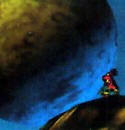
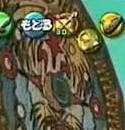
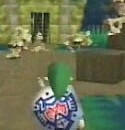
When Nintendo decided that the first Zelda for the Nintendo 64DD was being ported to cartridge, they began to develop a new Zelda game for the 64DD. The title, formerly known under the codename Zelda Gaiden, would have fully used all the 64DD features, especially the internal clock. In Gaiden gamers would have played as Link trapped for a week (yes, 7 days!) into a strange world on the verge of destruction. At the end of the seventh day, a natural disaster would have occured and to sruvive Link would have to travel back in time, trying to find a way to save the Termina. It was also possible to buy “more time” with rupies.
Later identified as Legend of Zelda: Gaiden (when it once again moved to cartridge), this title again starred young Link who was supposed to spend a week in a doomed world. After seven days, a disaster would destroy everything and Link would have to travel back in time to avoid it. IGN: Hyrule Time Volume 4
Environmental and time changes were going to be saved in the rewritable section of the special 64DD disks, thus influencing the events of the seven days. Another interesting feature would have been a new version of the great fishing mini-game already seen on Ocarina of Time, this time called Jabu Jabu fishing. Miyamoto even said that to stop the moon (or to stop time?) you would have needed to fish Jabu Jabu, the fish-god, but it could have been a joke.
With the 64DD failure, Gaiden was cut and quickly redeveloped for a release on the standard Nintendo 64, which was then already being forgotten because of the “next-gen” consoles (Dreamcast, PS2, Xbox and GameCube).
There will be no version of Gaiden for the 64DD. “We have made various changes to the engine, so it is only going to work on cartridge,” said Miyamoto – IGN: The Legend of Zelda DD / 22 Sep 1999
Since the game was originally designed to run on 64DD, a unit that required the 4MB RAM expansion, it’s no surprise that Gaiden (now on cart) will support the RAM Pak.
As we can read on IGN64, Zelda Gaiden was meant to be a different game than Zelda URA:
In an interview with Japanese game magazine Famitsu Weekly, Shigeru Miyamoto confirmed once and for all that the cartridge-based Zelda Gaiden and the long talked-about 64DD Ura Zelda are two separate projects.
Thanks to Glitterberri’s translations we can read more about the development of Majora’s Mask.
Koizumi: That’s what he told us! I remember thinking to myself “That’s not helpful at all!” [Laughs] I’d originally been designing a board game, based around the theme of cops and robbers. I wanted to make it so that you technically had to catch the criminal within a week, but, in reality, you could finish the game in an hour. I figured I’d just throw what I already had into Majora’s Mask.
From Iwata Asks interview for the release of Majora’s Mask 3DS we can read more info on the these differences:
Right. But at first, it was one week.Three days was originally one week?That’s right. But when you returned to the first day it was like “Do I have to go through an entire week again…”, so we thought three days would be just right.Wait, it got decided just like that? (laughs)(laughs) In this game the townspeople do different things each day and many different things happen, but when the timespan becomes a week, that’s just too much to remember. You can’t simply remember who’s where doing what on which day.oreover, you probably wouldn’t have been able to make it in a year if you were aiming to make a game filled with so much content for seven days.ight, we never would have been able to do it. We felt it would be best to make it a three-step process, and we compressed all sorts of things we had planned for over a week into three days.Aonuma: The development of Ocarina of Time was so long, we were able to put in a whole lot of different elements into that game. Out of those, there were ideas that weren’t fully utilized, and ones that weren’t used to their full potential. One of those was the mask salesman8.
The Legend Of Zelda: Majora’s Mask
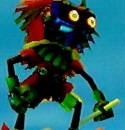
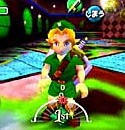
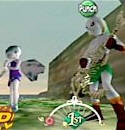
Released for Nintendo 64, the “sequel” of Ocarinaof Time lacked many of the features of the original 64dd version. Four days out of the original seven were removed, some dungeons were never completed, and many subquests never seen the light (or who knows.. maybe they were reused in Wind Waker). Yet, even so heavily redesigned, Majora’s Mask is certainly one of the best and most interesting games of the Zelda series.
Thanks to Glitterberri’s translations we can read more about the development of Majora’s Mask. The team planned to finish the game in 1 year and in that short time they surely had to cut some things from the project:
However, it really only takes a year to make the game itself. For Majora’s Mask, we had 30 to 50 staff members working on the game right from the get-go. With amount of resources required for a Zelda game, we had everyone working overtime. Striving for a unique experience with every game makes for hard work. And we did manage to do that with Majora’s Mask. So, all in all, I can say that it made for one strenuous year.
A Link To The Past

But what of the original Zelda 64 project has been left hidden inside the final games? Thanks to countless hours of exploration spent in the two games, hackers kills and Gameshark codes, it’s possible to find some interesting unused content in all the N64 Zeldas.
Zelda 64DD / URA > Ocarina Of Time
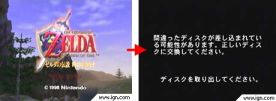
In the Japanese version of Ocarina of Time, when a 64DD is connected, a screen is displayed that warns the player to insert the Zelda URA disk.
The Hyrule Field Runner, found in Gerudo Valley, is famous for his unbeatability. In fact, even stopping the time with a Gameshark and finishing the course with a 0:00 timer, the runner will always say that he has already beated you by 1 second. Nintendo admitted that is not possible to beat him in Ocarina of Time, and it was probably going to be a new quest for Zelda Ura, using a new item to beat him.
When checking the text inside the Ocarina Of Time rom code, it’s possible to find some sentences that don’t appears in the final game, like “Hi! I’m a talking door!”- “The Entrance to the Past” – “The Entrance to the Present” – “The Entrance to the Future” – WHAAAT!? Look at all those flags! Can you figure out which ones are real? – This door is currently being refurbished [Thanks to Triforce of the Gods for the contribution!]
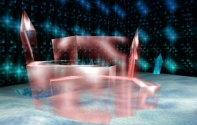
Thanks to some Gameshark codes, it’s possible to find this unused ice structure in one of the Beta Quests, a model that was later used in Master Quest.
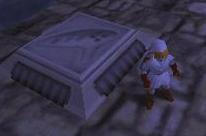
In a Beta Quest you can see a strange pedestal with an Ocarina icon, never used in the final game but maybe connected in some way or another with Zelda Ura or with the beta game. The pedestal is located at Zora Domain, at the entry of the Jabu Jabu’s mouth.


These two icons left inside the rom of Ocarina can be translated as Wind Medallion and Ice Medallion, and they are most likely the leftovers of two temples removed from the final game and probably scheduled for Zelda Ura.
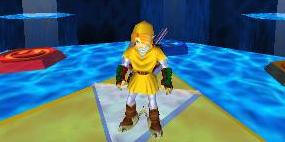
It’s also possible to find two unused tunics which perhaps were going to be used in the removed dungeons: The golden one (Light Temple?) and the white one (Ice Temple ?).
In the secret cave across the entrance of Gerudo Valley, it’s possible to find one of the gossip stones. The message that the stone says is: “They say that there is a switch you can only activate by using the spin attack“, but in the game there isn’t a button which it is activated only with the spin attack, and then it is likely that it refers to a puzzle of URA. UPDATE: Thanks to Ultraman82 we found out that in Ocarina of Time there is really a switch that should be activated only with a Spin Attack. Is this one in the Water Temple:
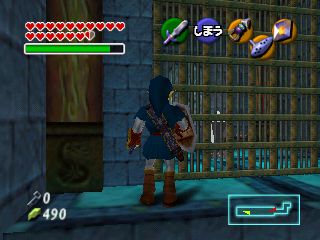
In reality, the 3D engine collisions in the game is not perfect, so you can activate it with the Biggoron Sword too (because is longer than the normal sword), but otherwise only a spin attack can activate it!
One of the first NPCs that were shown was a girl named “Aria” that could have had a central role in Zelda 64DD. This character and her 3D model were never used in the final game, but hidden in the game’s code the data for Aria’s 3D model were found and restored in all their glory, as you can see in the image below. As far as we know, there are no official info about who Aria was and what her role could have been.
Aria in Zelda 64DD
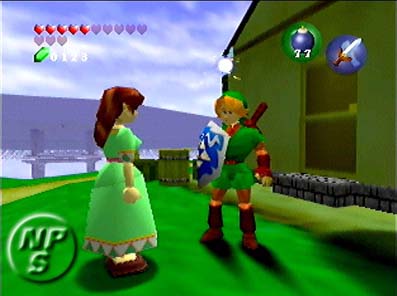
Aria restored model in Ocarina of Time
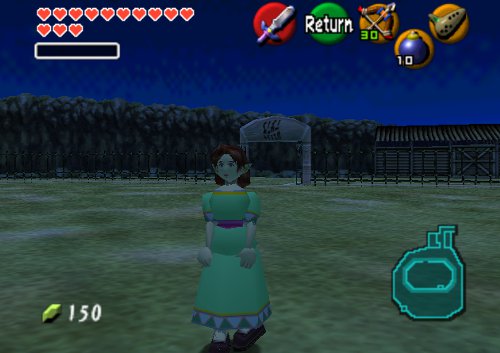
Another strange message of one of the gossip stones at Zora’s River is: “They say that there is a man who can always be found running around Hyrule Field”, but this statement is pointless because in order to read the advice you need the Mask of Truth, available only when you have already met the Hyrule Field runner.
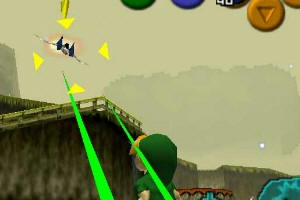
A code for the Game Shark can instead make appear in the Kokiri village an Air Wing , a spaceship (for those who don’t know) used in another Nintendo game, Star Fox. The polygonal model is perfectly animated, with a laser gun that attacks Link, and when hit it even falls down and explodes..therefore it seems much more than a simple model left inside the game. Maybe it was originally used for an easter-egg quest, available only with URA.
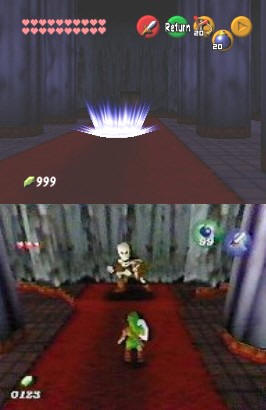
Inside the Debug Rom of Ocarina of Time: Master Quest it is possible to find a room not available in the final game, but showed many years from the release of Zelda 64 in many beta screenshots. This beta room was left inside the rom all these years..Nintendo forgot it because it didn’t notice it or for another reason ? We are still researching the secrets of this new Debug Rom.. and maybe some day it will be possible to find even the fabled Unicorn Fountain.
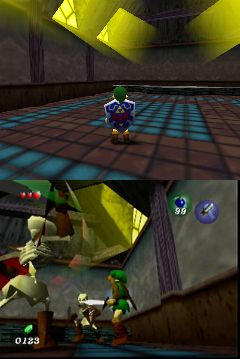
Here is another beta room from the Debug version of Ocarina of time, which was first showed in many old screenshots of the game, and that is was also left inside Ocarina of Time all these years..
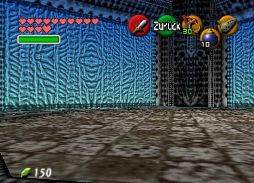
Another beta room not available in the final version of Ocarina of Time, but explorable in the Debug Rom.
As Ocarina of Time was released to be ready with the 64DD Expansion, in the final game is still possible to find the icons for the Zelda URA saves:
![]()
Nintendo 64DD extension of Ocarina of Time is the existence of N64DD Save Files. They can be created on a real N64 by slowly pulling out the left side of the cartridge while copying a file. Files created this way have a “Disk” tag attached to it and cannot be opened, as they’re grayed out. Trying to copy or delete such files crashes the game. Version 1.2 clears this flag before displaying the menu, so the tag can’t be seen.
Do you know some more beta connections? Leave a comment below!
Ocarina Of Time / URA > Gaiden / Majora’s Mask
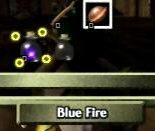
Even if not normally found in the game, the Blue Fire of Ocarina of Time was left inside the final version of Majora Mask. Unfortunately, it is possible to see it only with a code for Gameshark.

Another two items from Ocarina of Time not used in the final version of Majora Mask: The Fairy Ocarina and The Fairy Slingshot.
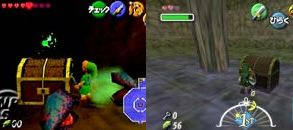
The photo on the left show the beta design of the treasure boxes in one of the old versions of Ocarina of Time. In the final game they were replaced with another kind, but, as you can seen from the screen on the right, they were later reused in Majora.
It seems like that some of the Skulltula House of Majora Mask were originally beta dungeons of Ocarina of Time which were never completed but later rearranged for the sequel.
The Bunny Hood is one of the mask of Majora, used to go faster. In Ocarina of Time. the runner says that with this mask you could run faster and became unbeatable. So it is likely that it was one of the new skills of the masks in Zelda Ura, and with one this mask it was finally possible to beat the runner. When Zeldan Gaiden was began, some of the ideas for the new masks were taken from the same characteristics of the masks featured in URA.
Do you know some more beta connections? Leave a comment below!
Zelda URA / Ocarina Of Time > Zelda 3DS
As we can read from TCRF, some unused items and file names are hidden in Zelda: Ocarina of Time 3DS and those have some interesting relations with Zelda URA and the development of the original game:
The texture file used for choosing the Master Quest option from the menu screen is called ura.ctxb.
The mirrored maps used in the Master Quest have “DD” in the filename, a reference to the Disk Drive.
As the Forest Temple was once a Wind Temple in Ocarina of Time, some file are still named with their “wind” name: NA_BGM_OCA_WIND, kazenomenuetto.csab (Minuet of Wind), zelda_gi_melody_wind.cmb, mjin_flash_model_wind,
Also, the Water Temple was once referred as an Ice Temple: zelda_gi_melody_ice.cmb, mjin_flash_model_ice
Zelda Gaiden > Majora’s Mask
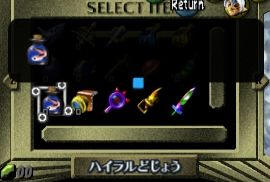
Thanks to the Gameshark it is possible to make appear this unused item in Majora Mask’s inventory. It’s probably just a fish or a bait in a bottle. The japanese text tells us that the item is called “Hyrulian Dojo”, and it is most likely a leftover from the already quoted fish mini-game that was going to be available in Zelda Gaiden.

Another text not used in the final version of Majora, The “Grandma’s Drink“, probably a potion like the one from Wind Waker.
As we can read on TCRF, in Majora’s Mask there’s an hidden Link Mask, that is unused in the final game. It seems that Skull Kid could have used this mask in Zelda Gaiden for some reasons, maybe a removed cutscene or a different ending? In early Zelda Gaiden screenshots we can see that there was an Adult Link Mask, but we don’t know if these 2 are related somehow.
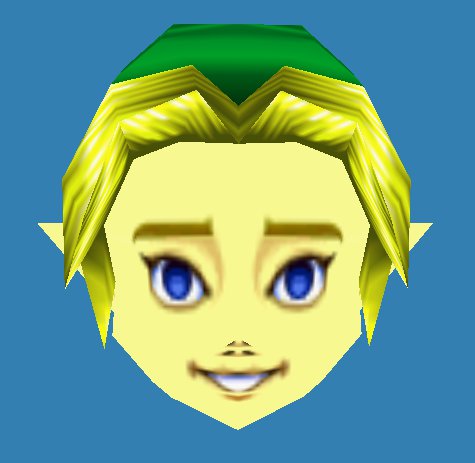
Do you know some more beta connections? Leave a comment below!
Once Upon a Time
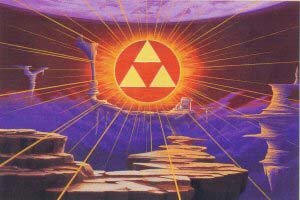
The original story of Zelda 64 was different
Link is preparing for his coming-of-age ceremony, in which he will receive his guardian spirit. In the tradition of his people, children receive a fairy from the Fairy Tree when they reach adulthood. This fairy becomes a person’s lifelong familiar. The fairy accompanies the youthful adventurer seeking his or her fortune in the maze-like forest or in the lands beyond. Link’s ceremony, however, is not destined to be a happy one. The Fairy Tree, source of guardian spirits, is captured by a strange creature from the depths of the forest. Link is able to locate his guardian spirit, Navie, and with her help, slay the creature. However, in the process, the Fairy Tree is grievously damaged. As its life force ebbs, the Fairy Tree speaks the words that will shape Link’s destiny.
“Do not allow the thief, Gannondorf, to claim the Triforce … ” the Tree mystically communicates. “Oh brave one, you must take this sacred stone to a wise man….”
Gannondorf was infamous throughout the land for his evil practices as the king of thieves. He lusted for the power of the Triforce and searched throughout Hyrule for its resting place, most recently plunging into the forest of Link’s people. Link knew he was in grave danger should Gannondorf find him. He took the sacred stone from the Fairy Tree and set out for Hyrule Castle, the capital of the Hyrulian people. Upon entering the castle, Link is welcomed by the young Princess Zelda, a woman of the Hyrulian royal family about the same age as he. She is well aware of the crisis facing the land of Hyrule. Zelda relates further details about the Triforce’s hiding place, telling Link that he needs to find the three sacred stones that fit into a magical Ocarina, which serves as the key to hidden realm. Link’s race with the evil Gannondorf to find the sacred stones and the hiding place of the Triforce is on!
The End.
Would you like to play Zelda 64 but you lost your cart? Buy it again from Amazon!
What do you think about this unseen game? Give your vote!
Would you like to add more info, screens or videos to this page? Add a comment below!
- Dead Unity [PC / PSX – Cancelled] - 04-01-2025
- Dragonkind [XBOX/PS2 – Cancelled] - 02-12-2023
- Damnation: Hell Breaks Loose [PC – Prototype] - 07-10-2023

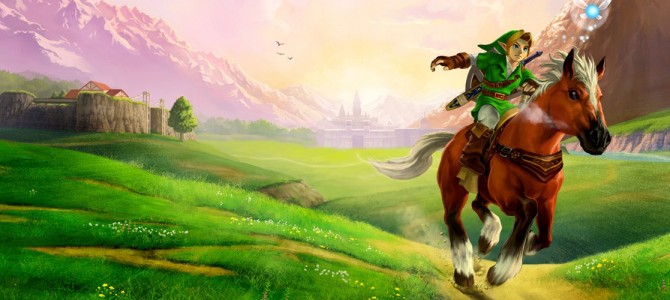
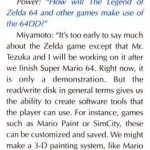
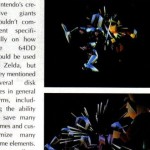
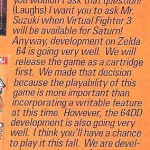
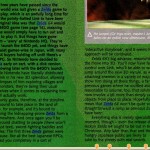
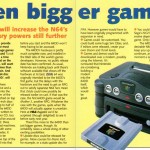
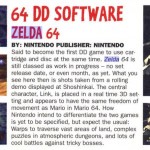
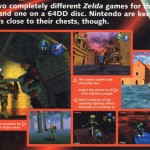
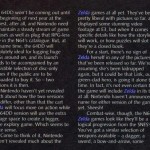
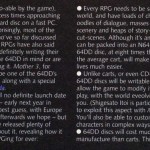
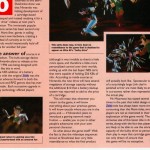
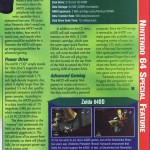
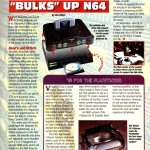
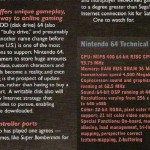
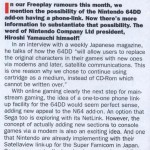
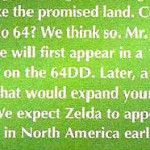
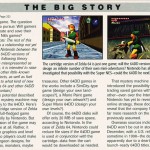
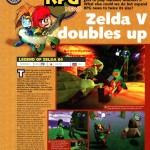
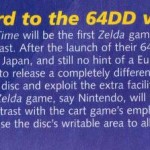
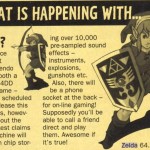
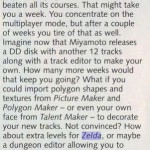
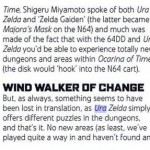
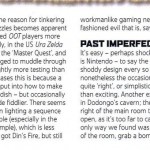
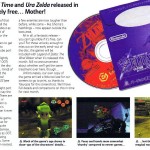

 (16 votes, average: 4.75 out of 5)
(16 votes, average: 4.75 out of 5)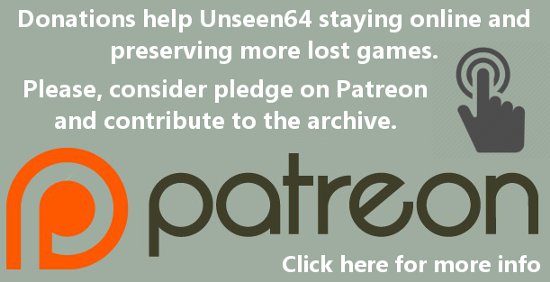
Ah the beta… So much potential… So much that could have been… On a related note, one day when I was fooling around with the oot debug rom (I was entering random values into the gameshark), I seem to remember accessing the unicorn fountain a different way than normal, and then the triforce appeared in the air… Im wondering, is this well known, or am I the first one this has happened to?
Bu bu but Miyamoto confirmed that URA Zelda was completed as stated in the article.
It’s unlikely that we will ever see unreleased content on VC by Nintendo although there is already an instance of it by SNK/D4.
YOU CAN BEAT THE RUNNING MAN!
1.go to him (as adult!)
2.start the race
3.go to the temple of time
4 when ure child link go to the bridge that goes to kokiri forest
5wait.(i did it on a real n64 and on an emulator)
this usually takes a while
DO NOT TURN OF THE CONSOLE!
NOTE:
this is a glitch and it only works here!
this is the only place in the game where you
can stand and wait untill you turn adult
and it ONLY works during the race
you wont get a prize tho:(
on a real n64 it takes (i think it was like 7 days or so….
but long time since i did it)
I have tried this on V1.2 and V1.0.
dear ante:
The BS can be smelled from miles.
Actually Land, he’s telling the truth. You basically have to wait seven in game years at the finishing point, which is approximately 7 real days. There’s videos on Youtube, even try it yourself with Project64 with frame limiter off. Does absolutely nothing to benefit he game though.
Being one of the people who made some of these beta findings, scoured the debug ROM for extras, and knows the game practically by heart, I can guarantee that it is impossible to beat the running man. The videos on YouTube were made by editing the text in the ROM (it does not exist in the original images). Keep in mind he says Link “beat” him by one second, yet he’s on the bridge when Link gets there. Nintendo typically is not so lazy as to make nonsensical things like this happen.
As further proof that this is impossible, the game is not structured to even allow Link to change ages without going from one area to another. If you attempt to force Link to change his age using a code, the game will either crash (depending on if you’re using GameShark or have TLB enabled in the emulator) or will graphically glitch. Internally, areas are divided based on age, so it would be impossible for the game to support this.
Also, there seems to be some confusion about the Debug ROM and the Beta Quest. First, there are only 9 beta quests, which have been more or less fully explored since about 2001. It’s possible to manipulate the game to load any version of an area that exists in the ROM, which means that all of the areas that exist in the final version of the game have been fully explored.
The Debug ROM for Master Quest contains several additional levels that had been used for demos and testing (and possibly were legitimately in the game at some point in production), but these areas never existed in any retail version of the game.
Some other notes:
– There are many alternate tunics, including alternate shades of the standard red, green, and blue, but the most notable ones are the yellow, white, and black tunics. Only the typical red and blue tunics have any noticeable effect.
– The Ocarina Pedestal is actually a beta leftover due to the old design of the ocarina (compare the button arrangements to some of the screenshots from mid- to late-1997 and the released version). It has no noticeable effects and probably was an old design for a warp pad, or possibly was used to indicate that you needed to play an ocarina song. If it was a warp pad, then there were three designs of the warp pad in all, which is pretty amazing and ridiculous.
– There are actually three medallion-related images in the game, but the third one is typically not mentioned because it’s too closely related to one of the medallions that ended up in the final game. The three beta medallion names were: Ice Medallion, Wind Medallion, and Flame Medallion. These changed to the Water Medallion, Forest Medallion, and Fire Medallion, respectively, over the course of development and explains the designs of the water and forest medals. The other three medallions in the game had beta names as well, but I do not remember them offhand.
– The Unicorn Fountain is not in the Debug ROM. All areas that exist in it have been revealed already. The original great fairy design, however, DOES exist and has been posted on YouTube. Like many of the other beta actors that were found, the great fairy does not have any behaviors and may have been scrapped before it was animated.
– The “Strongbox” room (the room with the strange blue walls) cannot be accessed in the Beta Quest. It can only be found in the Debug ROM.
– There’s far more alpha/beta content in the game that isn’t mentioned in this article. I don’t know if the information’s available freely anymore, but enough of it has been posted on YouTube and some other Zelda fansites.
Hope this helps clear up some of the errors in this article. Overall, it’s a great overview, though the final part comparing the Master Quest to the promises of Ura-Zelda fails to capture just how pissed off some of the more dedicated fans felt when it was released. I remember when I started playing it and realized that it was just a dungeon remix, I started spewing many an expletive and curse.
Wow this is SO cool! I read the whole thing and found it super interesting. Thanks for posting! Now I’m really intrigued about all this URA stuff, and I just wanna go and play OoT Master Quest to see if I find anything cool :)
It was just great and the info was really useful
Thanks Helen, we are happy when people appreciate our articles! :D There would be even more interesting stuff to add to this article, but now i don’t have enough free time anymore :(
I got a sudden realization.
I bet 75 percent MINIMUM of Majoras Mask is imported from URA Zelda such as the interactive NPCs where yoyu can follow them around Clock Town such as the Postman Side Quest or even the Clock Town Bank where you can have an account to put your money in which grows over time which would’ve been something like Hyrule National Bank. (HIB)
I am sure all of that were likely ideas for Market Town in URA Zelda and maybe a new village thrown in as swell.
I also bet the character transformations like Goron Link or Zora Link were going to be in URA Zelda too which Shiek would help you obtain. Then you’d could be for example Zora Link in order to free the ice in Zora’s Domain in the adult timeline.
By the way
Did you know the game URA Zelda when pronounced comes out as “You Are A Zelda”. :p
I wonder if there is any way to make a Zelda URA rom hack so we can finally have our glory that was stolen by a certain bear and bird.
Quote from the pirate in Banjo Tooie I forgot his name:
“A bear stole my glory he did. Looked a bit like you.”
I also wonder if there is any coding of URA Zelda in either the Majoras Mask Rom or the expansion pack when the game is put in.
There was a small community in the Banjo Kazooie group that was going to do a Donkey Kong 64 hacking project for any coding of Stop N Swop since someone found coding for the infamous Banjo Kazooie ice key in the DK64 Cartridge.
The project died without any final results and hasn’t been explored since so maybe Majora’s Mask is the same way with DEEP hidden coding using special triggers waiting to be explored by someone with the right equipment.
No?
When you speak of Master Quest you say “Released as a preorder bonus for Wind Waker”, but wasn’t Master Quest first sold on a 64DD version in Japan?
Because I was under the impression that, taking too long to be finalized, Nintendo ended the thing turning the Ura Zelda everyone waited into the Master Quest we know, trowing away the new quests and dungeons. (This could explain Master Quest’s Japanese name.)
Found another version of the same story:
“Found a page with a little more detailed synopsis of the same story, including a translation from the original Japanese version:
Japanese (Top Row), ….&… English, (Bottom Row):
神々の子孫が住むと言われる地、
ハイラル。そこには多くの民族 がそれぞれの土地を守りながら 独自の文化を築いていた。
Hyrule: A land said to be inhabited by the descendants of the gods. Its myriad denizens have forged unique, individual cultures, while safeguarding their respective domains.
そのハイラルにある『迷い
の森』の住人、コキリ族の少 年・リンク[=プレイヤー]は “守護精獲り”の儀式の朝を迎えて いた。
Link (the player), a boy of the Kokiri tribe dwelling in Hyrule’s Lost Woods, was approaching his “Guardian Spirit Bequeathal” ceremony.
“守護精獲り”とはコキリ族の少年が妖精
の木からパートナーとなる妖精を受け取 り、森を自由に歩けるようになる一種の 巣立ちの儀式である。ところが妖精の木 は、怪しげな魔物によって乗っ取られ ていた。リンクは途中で救出した 妖精ナビィと協力して魔物を 倒すが、妖精の木はリンク に遺言を残し朽ち果ててい く。「ガノンドロフに トライフォースを渡して はならぬ…
The “Guardian Spirit Bequeathal” is a type of ceremony marking the day when youths of the Kokiri tribe receive, from the Fairy Tree, a fairy that will act as their companion, and gain the ability to wander the forest freely. The Fairy Tree, however, had been overtaken by a suspicious influx of demons. Link joined forces with Navi, a fairy he’d rescued enroute, to defeat the monsters, but the Fairy Tree withered away, leaving behind one last request. “Ganondorf must not be allowed to claim the Triforce…”
勇気ある者よ、この
精霊石とともに… ハイリアの知恵ある者を 探せ…
“Oh, brave one, take this Spiritual Stone, and seek out the one with the wisdom of the Hylia…”
SOURCE:
For some unknown reason, I was unable to paste the Source URL, on my Android Tablet, so let me try again:
https://tcrf.net/Prerelease:The_Legend_of_Zelda:_Ocarina_of_Time/Early_Sword_on_A#Nintendo_Power_.23103
YAY, IT WORKS!!
Actually, here’so the correct URL for the location of that Beta Storyline:
https://tcrf.net/Prerelease:The_Legend_of_Zelda:_Ocarina_of_Time/Early_Sword_on_A#Spaceworld_.2797_Guidebook
Since the above Nintendo Power Image doesn’t work any-longer, well here it is, in archived format:
https://web.archive.org/web/20150414183327if_/http://zeldapower.com/images/beta_oot/npvol103_pg2.jpg